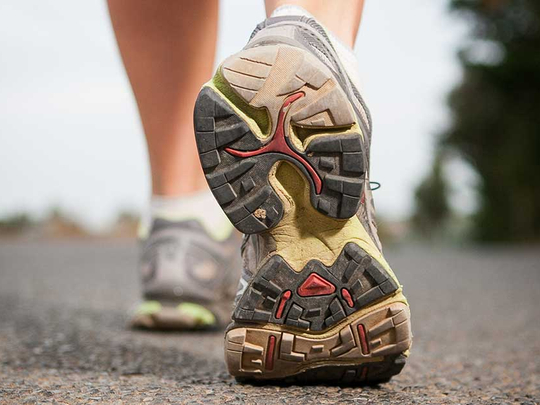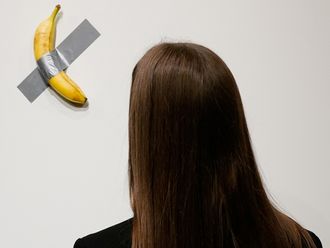
Los Angeles You might think that cushioned running shoes were designed to give your feet a break. But scientists have discovered that lacing up causes us to use more muscles in our feet than we thought.
After attaching tiny wires to the feet of 16 intrepid volunteers, researchers found that certain muscles along the arch of the foot were more active while running in shoes than while running barefoot. The findings were published last week in the Journal of the Royal Society Interface.
“We wanted to know, when you run in shoes, how does that impact the mechanics of your foot?” said lead author Luke Kelly, a research fellow in the Center for Sensorimotor Performance at the University of Queensland in Australia. “And, is there a chance that running in shoes might weaken your feet in the long-term?”
Our feet act like springs when we take a step, absorbing the energy of impact as we hit the ground and using it to push us off again. The force of the ground pressing back against our feet is known as the ground reaction force, and this is what our feet, ankles and legs must absorb with each step.
As the foot flattens on the ground, the muscles along the arch of the foot stretch out. Then, as we lift the foot in anticipation of the next step, that spring recoils and the muscles contract.
Kelly and his team figured that the arch of the foot and the padding of the shoe were like two individual springs working together. That means the foot has to compensate for the softness of the shoe by stiffening the muscles in the arch in order to keep us stable and upright.
To understand how all this works, the researchers had the 16 study participants take two jogs on a treadmill - once while wearing a pair of Asics GT2000 sneakers, and once while barefoot. In both trials, the participants ran on a treadmill that was fitted with instruments to record the force of each step they took.
Two tiny wires, each about the thickness of a hair, were carefully inserted into the largest muscles in the arch of the foot - the abductor hallucis and flexor digitorum brevis - to measure whether they were working or not. The runners also wore small reflective markers that allowed cameras to capture the 3-D movement of their feet.
The team found that the springiness of the arch was reduced while running in shoes, yet there was an increase in muscle use. That’s because the foot senses that it’s landing on a soft surface and it tenses up those muscles to maintain that stability, Kelly said.
“The surprising part was how the muscles respond running in shoes,” Kelly said. “Shoes don’t block muscle function - we see more activation in muscles when we run in shoes than when we don’t.”
The results are somewhat at odds with past research on running shoes. A 2014 study in the Journal of Sport and Health Science found that runners increased their foot muscle strength more when they wore minimal running shoes than when they donned cushioned sneakers. Minimal running shoes are meant to mimic barefoot running while still providing lightweight protection.
“People who walk barefoot tend to have stiffer, stronger feet,” said Daniel Lieberman, a professor in the department of human and evolutionary biology at Harvard who was not involved with this study. “So this research is counterintuitive to the general understanding of how feet work in shoes.
“Until this is replicated, I think people should be a little skeptical,” he added.
Kelly agrees that further research is needed to get a better understanding of just how the feet and shoes interact. Only then can designers create better running shoes, he said.
And in the meantime?
“Comfort is the most important thing,” Kelly said. “If the shoe is comfortable and it feels good on your feet, then that’s what’s going to work.”












